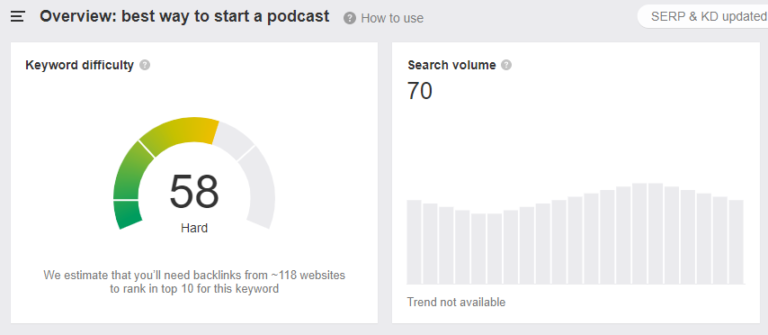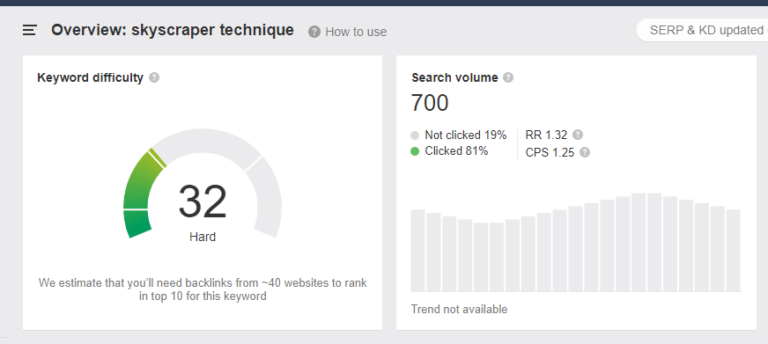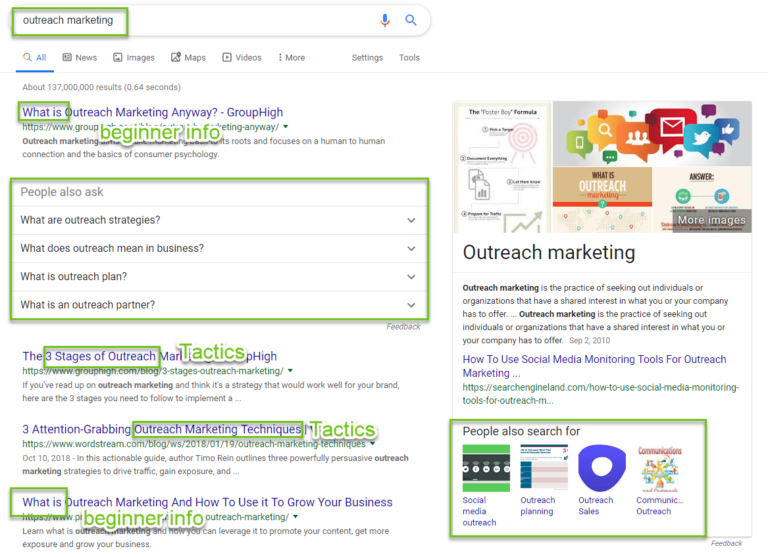Content creation and blogging have become extremely saturated.
But you knew that already.
As a blogger, you’ve come face to face with countless challenges.
Thankfully, you aren’t alone. And you don’t have to sit back and watch your content struggle.
Here are the three biggest blogging challenges and how you can overcome them.
Challenge 1: Topic Ideation / Keyword Research
There are millions upon millions of bloggers, companies, and brands putting out content on a daily basis.
That’s millions and millions of keywords being sought after.
Topic ideation and finding worthwhile keywords that don’t take hundreds of DR70+ inbound links is a needle in a haystack.
Take this keyword for example:

It’s relatively long-tail, it’s top of the funnel, a great way to bring in some organic traffic and build brand awareness.
But a 58 KD rating? Yikes. For 70 searches a month?
That’s 118 inbound links just to crack the top 10 for this keyword.
Worth it? Probably not.
The moral of the story is: most keywords are dominated already, and it’s only getting worse.
So, how do you bring in precious traffic and find topics that aren’t taken? Here is how.
Solution: Stop writing keyword content. Keyword content can be useful if you have the brand awareness already.
But are people really going to trust your brand over HubSpot when it comes to sales? Or Search Engine Journal (wink wink) when it comes to SEO?
Doubtful.
They’ll see Search Engine Journal or HubSpot and think: yeah, those folks know what they’re talking about.
If you are struggling to generate ideas for topics that aren’t already beaten to a pulp, stop focusing so much on the keywords.
Instead, focus on these elements:
- Take a new angle on an existing topic.
- Create your own keyword.
- Develop a research study.
Taking a new angle on an existing topic can help you stand out in the SERPs that are way too crowded with “xx tips” post or “why XX is the best strategy.”
For example, talking about how amazing PPC is and the benefits is old news.
PPC is great for X and Y and Z reasons. Snooze.
Instead, capture attention by flipping the script:

This hits the proverbial curiosity nail right on the head.
It’s something you don’t expect to see, driving you to click to learn more.
Creating your own keyword is similar, and is a proven concept. Take Brian Dean of Backlinko for example. His Skyscraper technique wasn’t a keyword, and now it gets tons of searches every month years after it went viral:

Did you find a technique for increasing conversions? ROI? CTR? Anything?
Name that specific, actionable, repeatable technique and blog about how you did it.
Conduct outreach for links, share it and discuss on social and you can build your own keyword search volumes from the ground up.
Lastly, this directly ties into the third point: creating your own research study.
Original research is on fire right now, and for good reason: bloggers need data to back up their claims, and marketers need fresh ideas to test against their own audiences.
Both create a winning formula for links, rankings, and traffic.
Challenge 2: Writing High-Quality 2,000+ Word Posts
While content length is generally arbitrary, it’s been proven that articles close to or above 2,000 words generate better rankings, more links, and more traffic.
They solve multiple pain points and questions with a single post, leaving no need for a user to click back to Google.
At least, they should.
But writing content like this often leads to fluffy content with no real added value.
Just because studies show that your content should be longer doesn’t mean filler is the answer.
It means more of everything users are looking for: subtopics, tutorials, guides, exact steps, and images to showcase them.
Solution: Structure your content to match SERP flow and user intent.
There is no magic number for word count. Just having a page with 2,000 words doesn’t send signals to Google that say “gimme the rankings.”
Each section of content in your piece should solve user queries, and most of all satisfy user intent completely.
In a tool like Ahrefs or SEMrush, look up your target phrase and start compiling an outline based on related topics, searches, and intent:

Next, head to Google and inspect the SERP. Here is where you can start to do a deep dive on searcher intent to help refine your outline based on keywords and related searches.

First, start with the top-ranking post. This will help you align your content with the flow of the SERP.
What’s the headline? What intent are they aiming at compared to the other content on the front page?
Notice how the first ranking piece is tailored directly at beginners. And it makes sense. Someone searching for “outreach marketing” is more likely going to know nothing about it.
Meaning tactics come secondary for this intent.
Meaning your post should follow that same trend: explain it in grave detail before you even touch on a tactic.
Now, look at the SERP features: what specific questions are listed? What other searches are commonly done after this generic search?
These are all direct clues into what the majority of searchers are looking for when they click on something for outreach marketing.
Using these factors will help you provide value to users and search engines alike.
And with it, you’ll be cracking 3,000 words without breaking a sweat.
Challenge 3: Getting Traffic from Content
Creating content is the easy part. Getting real people to visit your content, enjoy it, and come back is brutal.
With links being a critical SEO factor (and traffic factor), how do you get them?
How do you build that authority to help your amazing content get seen?
Here are some solutions.
Solution: Outreach & promotion, custom images, audio, and video.
First off, outreach and promotion need to be apart of your workflow, asap.
If you think content can just pick up steam, you’re mostly wrong. The odds of that happening are slim to none.
But, typical sharing of your content on social doesn’t work nearly as well as it did a few years ago.
Instead, your promotion should be focused mainly on any email lists you’ve built or direct outreach for links.
Direct outreach can be improved by creating custom images for your content and allowing other publications to cite them.
Turn stats into a custom graph.
Summarize the main points with a nice graphic.
Lastly, start repurposing your blog content into other mediums that can drive traffic:
Only 2 million podcasts are indexed by Google currently. Compare that to the millions of blog posts published DAILY.
Don’t have time for a podcast? Utilize video tutorials in your content to showcase step-by-step sections and publish them on YouTube.
Expand your written content beyond just your blog.
Conclusion
Blogging today isn’t as easy as write, publish, share.
Everything from your topic and keyword research to the length and quality of content matter more than ever.
Put these tips to use to conquer your biggest blogging challenges, improve traffic, and build your brand.
More Resources:
- 5 Lessons You Can Learn From 1,000+ Bloggers to Improve Content
- 10 Warning Signs You’re Creating Irrelevant Content
- Content Marketing KPIs: Your Guide to Picking the Right KPIs for Content
Image Credits
Screenshots by author, August 2019





